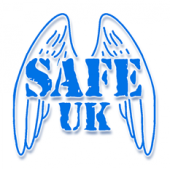Myspace Layouts - Myspace Editor - Image Hosting
Myspace Layouts - Myspace Editor - Image Hosting
The most common form of self-injury is cutting; although some people may burn themselves, pick or scratch at their skin, pull their hair (trichotillomania), punch themselves, ingest/insert toxic substances or objects, break bones or injure themselves through other means.
 
WHY DO PEOPLE SELF-INJURE? Self-injury may be used to relieve feelings of self-hatred, anger, emotional distress, sadness or depression.
The individual who self-injures may feel the physical pain is easier to deal with than the emotional pain they may be suffering. Self-injury only provides temporary relief and does not address the underlying issues.
Research shows that triggers may include being bullied, low self-esteem or confidence, issues with culture, race or religion, abuse (physical, sexual or emotional), school or exam pressures, confusion over sexuality or problems with parents such as divorce.
 
PARENTS, FRIENDS AND FRONTLINE WORKERS;DO
* Take it seriously
Someone who self-injures needs to be reasured that they are being listened to.
* Know your limits
Self-injury may evoke feelings of guilt, anger or frustration. It is a highly emotive topic.
* Gain trust
For most, self-injury is a very private act and disclosure may be difficult.
* Stay safe
You cannot stop an individual harming themselves. Ensure that proper care is taken of wounds and implements.
DON'T
* Judge
Research shows that 1 in 10 people have diclosed that they have self-injured at least once between the ages of 12 and 15.
* Patronise
People who self-injure need a supportive and safe enviroment to explore and discuss their feelings.
* Get angry
Disclosure may be difficult, a negative response may force a person who self-injures to continue in secret.
* Make it your responsibility
Those who self-injure need encouragement and support to help themselves.
 
ENCOURAGE THE INDIVIDUAL TO:
*Take responsibility
Learn to recognise the triggers which lead to a build up of negative emotions that may cause the individual to self-injure i.e. anger, frustration, self hatred.
*Occupy the mind
Having a focus may aid the reduction of anxiety which commonly leads to an individual self-injuring. encourage some form of exercise and taking time out and relaxing. Dancing, writing and painting are all forms of self expression and help to expel negative emotions.
 
MYTHS:
Attention seeking behaviour
Self-injury may be a way of asking for attention but it is not generally done in a manipulative way. People who self-injure do need support and attention.
Copycat behaviour
People generally self-injure because they feel that it helps to relieve a build up of negative emotions. An individual would not continue to self-injure if they did not believe it helped them.
Failed suicide
Self-injury is a coping mechanism to help an individual maintain their ability to function, it is an expression of emotional pain not an attempt to end life.
 
